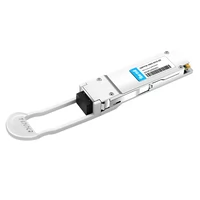Telecommunications is witnessing an astonishingly rapid evolution of networking technology, creating the need for high-performance solutions satisfying the increasing bandwidth and reliability requirements. Within this scenario arises an opportunity for the Industry’s First I-Temp 100G ZR QSFP28-DCO Module, whose launch is of enormous significance as it presents a small, powerful, and effective solution for data center and high-speed networking applications. The challenges of this post will be highlighting how network infrastructure can be changed by incorporating the I-Temp 100G ZR QSFP28-DCO Module, its functional advantages, and its possible sphere of exploitation oriented on the needs of modern data transmission and development. By going to the draw and showing you those typical features and performance, the problem is understanding one significant aspect of this industry’s impact.
Table of Contents
ToggleWhat is a 100G ZR QSFP28-DCO Module?
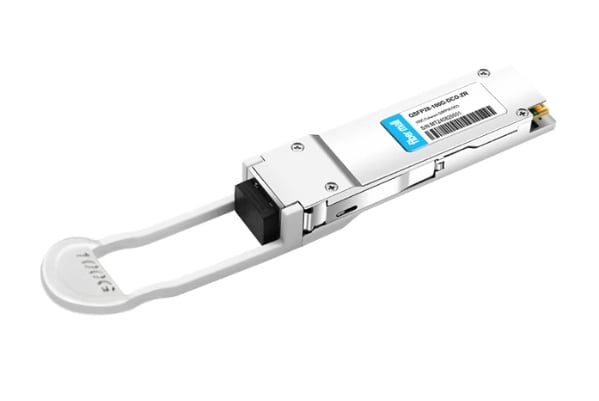
Understanding Coherent Technology
They allow data transfer via an optical fiber network using different modulation formats and detection techniques to improve performance. Furthermore, coherent detection systems provide a fundamental difference from direct detection systems as they can withstand degradation since they use both the phase and the amplitude of light waves. Enhancement of this technique allows further transmission distances to be carried out without using repeater amplifiers. In the I-Temp 100G ZR QSFP28-DCO Module, so-called ‘coherent’ technology performs rapid data encoding and decoding, which features high efficiency in non-optimal conditions that have become rather common because of the extreme needs in data transfer speed in current networks.
Overview of QSFP28 Form Factor
The Quad Small Form-factor Pluggable 28 (QSFP28) is a new type of transceiver that provides high-density network connections,, especially with ZR QSFP28 digital coherent optics. It represents an improvement of the first QSFP+ design, supporting operation up to 100Gbps through 4 channels, each with a rate of 25Gbps slotted for ZR QSFP28 coherent optics. This helps lessen the network operators’ burden whenever system scaling is needed, as this can easily be made without overhauling the whole subsystem. Apart from its small form factor, the QSFP28 is so efficient and, as such, is well suited for installation in confined data center spaces since its size is a major limitation. Further, applying advanced QSFP28 modules for diverse network protocols strengthens their application, expanding their use to include data center interconnects, high-performance computing, and cloud-enabling services.
Advantages of 100G Coherent Transceivers
When considering the interconnection of 100G coherent transceivers to a packet-optical network, there are several benefits worth highlighting. To begin with, they have been shown to provide first-rate modulation formats with subsequent improved spectral efficiency while optimizing existing bandwidth. This leads to lower service costs and better resource efficiency. Also, coherent technology has the tolerance for distorted channels, enabling it to work over long ranges of over 80 km without repeaters or amplifiers. Also, Such transceivers support more sensitive and fewer latency channels, which correspond to demanding applications in the streams of real-time data analytics or cloud computing where every millisecond counts. Last, regarding different fluctuations in network conditions and load appearance of 100G coherent transceivers, many assume that stable operational performance in network evolution is achieved even with the growing data transmission volume.
How Does the 100G ZR QSFP28-DCO Module Work?
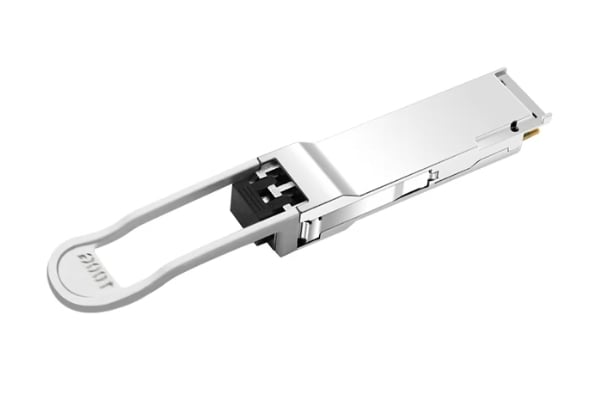
Role of Purpose-built DSP for 100G ZR Applications
The custom-made multiprocessor Digital Signal Processors (DSPs) are essential to 100G ZR applications since they facilitate extensive signal treatment when transmitting data at high speeds. The advanced level of these DSPs enables them to process and manage high-order modulation formats and carry out vital tasks such as coding, equalization, and filtering within the ZR QSFP28 digital coherent optics. Specific psychoactive agents more comfortably allow for data transfer over long distances, even in a turbid or crowded setting. Modern DSPs can also change per the transmission environment to ensure efficiency, which will lead to improved deployment of the 100G ZR modules in various networks.
Function of C-Band Tunable Optics
C-Band tunable optics play a vital role in a modern optical communication network due to its efficiency in managing multiple wavelengths. Urban utilization in its optical communication networks comes from the fact that these components, within the Wavelength Division Multiplexing techniques enable various channels to be transmitted on one fiber. This technology allows better bandwidth efficiency at the same time minimizing cost. Further, the C-Band tunable optics can provide different modulation formats, making them suitable for various systems designs using ZR QSFP28 digital coherent optics. They also help provision wavelength in the network more efficiently as load balancing is possible, which is required to distribute network traffic quickly and improve the network’s performance.
Silicon Photonics Optical Front-End
Silicon photonics is considered a revolutionary technique in terms of optical frontend technology. Silicon photonics utilizes the benefits of silicon-based circuitry from traditional electronic systems with photonic components. This new technology allows the packing of several elements, including waveguides, modulators, and photodetectors, onto a single chip, enhancing performance and reducing size and power consumption. The optical front-end in a silicon photonics system comprises signal generation, modulation, and detection capabilities, enabling data to be effectively transmitted through high-speed networks. Silicon photonics tries to facilitate progress in data centers, telecommunications, and consumer electronics by incorporating both optics and photonics. This enables effective solutions to address the increasing demand for bandwidth and connectivity in today’s communication connectivity architecture.
Why Choose Coherent Corp’s 100G ZR QSFP28-DCO Module?
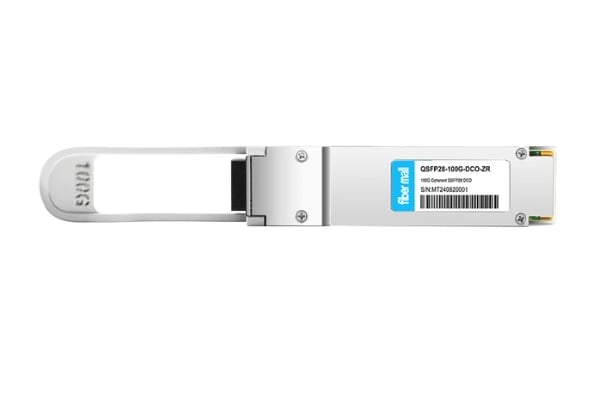
Industry-First I-Temp 100G ZR QSFP28-DCO Module
The Coherent Corp’s 100G ZR QSFP28-DCO module has been recognized and customarily presented as the first of its kind I-Temp-rated solution in the industry, which has good quality and works between – 40 C to 85 C extreme temperature ranges. Schmidt said that this module incorporates new and advanced digital signal processing technologies so that the operating power can be minimized and the signals can be improved. The 100G ZR QSFP28-DCO is intended for interconnections between data centers, enabling the transmission of optical signals over extremely long distances, making networks effective and highly reliable. Thanks to its small and stylish style and its support for deployment in high density, it caters to the surge of bandwidth requirements caused by cloud computing, 5G services, and IoT owners. Also, due to the module’s performance characteristics and conformity to international standards, it is possible to use the module in various networks, which is essential for operators searching for effective and highly reliable performance connection solutions.
Compliance with IEEE Standards
The Coherent Corp’s 100G ZR QSFP28-DCO module is Ethernet network compliant as it conforms to IEEE standards, whereas the IEEE 802.3 standard applies in Ethernet transmission. Such compliance ensures that the module meets the necessary guidelines concerning data integrity, performance, and interoperability in different network platforms. The module’s architecture and implementation meet the IEEE standards concerning the optical interfaces of the signaling protocol and power consumption for easy integration into existing systems. Following these guidelines enables operators to utilize new developments in optical technologies and, at the same time, enhance performance and reliability in fast networking. Following the instructions of the standard, 100G ZR QSFP28-DCO provides essential end-to-end connectivity objectives that are critical for working on contemporary applications like cloud computing and 5G communication.
Power Consumption and Dissipation
The 100G ZR QSFP28-DCO module from The Coherent Corporation is designed with a special view of power efficiency, which is essential for data centers and network operations wishing to cut costs and reduce the effects on the environment. Usually, the system is designed and employed in such a way as to consume less than 6.5 watts of power, which reduces heat generation in network environments. This patented specification is attainable due to advanced design methods directed toward optimizing optical signaling with performance correction. Power management is essential in the enhancement of the reliability and safety of the system, and it contributes to contemporary efforts to improve energy-saving technologies as demanded by the market. In this way, good use of the 100G ZR QSFP28-DCO module from the angle of energy saving is teamed with high-density deployment of devices without degradation of performance or exponentiation of the cooling costs.
What are the Deployment Scenarios for the 100G ZR QSFP28-DCO Module?
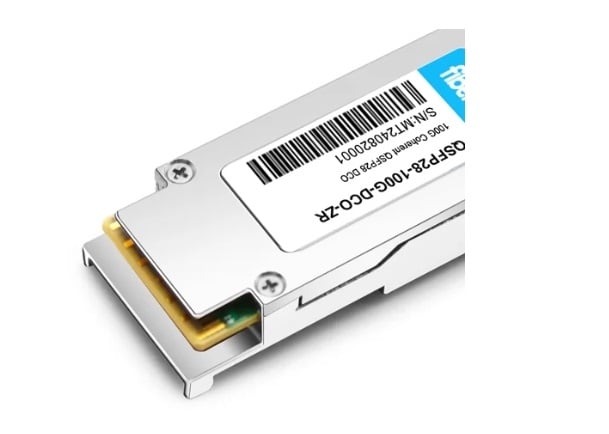
Use in Data Centers
The 100G ZR QSFP28-DCO module is flexible enough to be used in different deployment scenarios in the data center, thus meeting the increasing bandwidth and efficiency requirements. It is used to connect many high-performance computing systems and a multitude of data streams within various networks. The naked-eye rated 100G ZR QSFP28 DCO module is well suited for long-haul operability of the coherent optical technology, thus supporting inter-data center bandwidth and network region expansion. In addition, this compact enclosure design enables many ports to be hosted, which is very important in high-density data center applications on ZR QSFP28 DCO. The 100G ZR QSFP28-DCO is a competitive product in resolving data center trends where density and a technology footprint expansion must be sacrificed to lower operational expenditure. By using this technology, however, data centers could cater to increasing traffic levels with maximum service availability and optimal throughput.
Application in Edge and Access Networks
Edge and access networks are increasingly adopting the 100G ZR QSFP28-DCO Module, enhancing the existing telecommunication and data transmission architecture. It allows line speeds data connectivity at the edge, promoting IoT, cloud, and edge computing, leading to increased data traffic. Because the module allows effective transmission of information over long distances, it can connect sparsely populated areas to the core networks, reducing the latency and improving the delivery rate of the data.
Moreover, in these 100G ZR QSFP28 DCO module networks, content providers can deploy high-speed internet services, making it easy for the service providers to sell high bandwidth services. Its small weight and high port density ensure integration with the existing structures without extending the physical size. This support for enhanced performance and scalability positions the module as a critical component in the deployment of next-generation access networks. This allows operators to provide modern digital service requirements without compromising on efficiencies in the operation of the networks.
Deployment in Street Cabinets
The installation of the 100G ZR QSFP28-DCO module inside street cabinets is another step forward to improve the network coverage as well as the network interconnection. Since street cabinets are a primary concern of network distribution, adding this technology to these cabinets helps the service providers connect immediately. It provides a powerful link to the end users. The size of the module makes it possible to create routes in such a cabinet that fits several connections and maximizes operational quality.
With the installation of the 100G ZR QSFP28-DCO in street cabinets, operators eliminate the majority of the systemic delays while expanding the high-speed services becomes possible, for instance, enabling the saturated data transfer needed for smart city development or escalated broadband services. Besides, the exposure of this technology to external conditions makes it easy to use in outdoor cabling facilities, making it the most suitable for today’s telecommunication facilities. This deployment repairs the split of the core networks and the working population users, which translates to general network benefits and user experience.
How to Implement a 100G ZR QSFP28-DCO Transceiver?
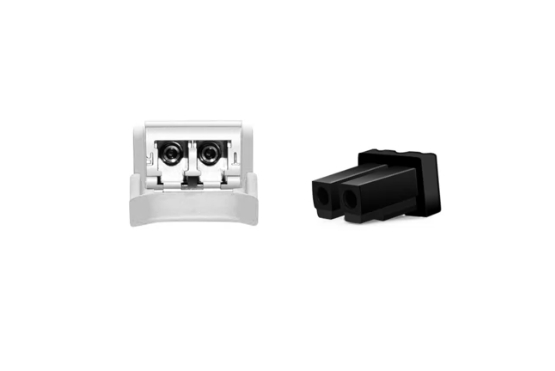
Installation and Integration
There are definite phases during the installation and integration of a 100G ZR QSFP28-DCO transceiver to ensure its proper operation and optimum performance. The first step is to ensure that all safety measures, including ESD safety, are observed. Keep the host device in mind and make sure it supports the transceiver module.
In addition, fit the 100G ZR QSFP28-DCO module into SFP28 or QSFP28 slot without any defects. After fitting the module, connect the optical fibres to the respective module ports and make sure that the connectors are clean and properly positioned to avoid any signal losses.
After carrying out the physical installation, turn-on the unit and check for its working status via the management interface or via diagnostic tools. One should be diligent with some parameters, including but not limited to optical power or temperature, as these parameters define the module functionality. To enhance the integration of such devices in the extant network architecture, the appropriate documentation and software provisions for the transceivers need to be followed in order to setup the device parameters so that recognition by the devices connected is guaranteed.
In summary, such operating procedures need to be followed as they will substantially improve the reliability and efficiency of the network performance.
Interfacing with Existing Network Infrastructure
When connecting the 100G ZR QSFP28-DCO transceiver to other network equipment or incorporating it into existing networks, it is vital to employ a step-by-step approach. First, review the existing network so as to establish the equipment present; this includes routers, switches, and optical transport networks available. This assessment will guide the determination of the required setups for the integration of the multifunction ZR QSFP28 DCO module towards improved usability.
After that, establish that the existing devices are compliant with the IEEE 802.3 standard for the 100G ZR optical systems of operation to be established. Inform the user to check whether the latest firmware revisions for the device have been installed; suppliers sometimes have this functionality to enable backward or future compatibility.
When setting the transceiver, the management interface should be used to offset the link type and speeds and, if needed, some quality of services parameters. For these configurations, several tests should be taken, including signal integrity tests and loopback tests, to check the performance and stability of the link.
Also, it would be important to include some monitoring tools to control certain parameters, lynching or error metrics for example, where and when corrective actions must be taken to prevent failure from occurring in the course of operation. It is only by repeatedly taking these actions that the 100G ZR QSFP28-DCO transceiver will be easily assimilated into the already existing networks with regard to efficiency and capacity of the network.
Software and Firmware Requirements
When it comes to the efficient and effective implementation of integrating the 100G ZR QSFP28-DCO transceiver within already prepared network structures, some particular software and firmware specifics have to be followed. To begin with, network devices that operate with the 100G standard and integrate the QSFP28-DCO transceiver should have applicable OS and drivers. Configuration of these transceivers is equally done using the manufacturer’s supported software tools, and the following installation is done using the official website of the company manufacturing the operating system.
Some transceiver and network device firmware should also be periodically upgraded from one version to the other. These enhancements usually entail more effective mechanisms for implementing some norms that are in the process of being incorporated, fixing some existing problems, or making the systems work better. The official specification is deliberated upon so that the compatibility issues of the different hardware and firmware versions are well addressed. It’s good practice to routinely check what’s new to avoid functionality obstruction or any disparity within the working of various elements of the Ashar Networks.
Reference Sources
Frequently Asked Questions (FAQs)
Q: Describa en pocas palabras el módulo I-Temp 100G ZR QSFP28-DCO.
A: I-Temp 100G ZR QSFP28-DCO es una códec óptico, lanzado por Coherent Corp, que can be integrated into network devices. Es adecuado para sistemas de telecomunicaciones y de datacom” a gran velocidad, širidinaties 100G ZR articulacei su bistat Catalogia optica.
Q: Why is the I-Temp 100G ZR QSFP28-DCO module so particular?
A: This module uses a power-efficient tunable laser and an efficient SiP optical front end. It can also operate in the 0 to 70 degree Celsius temperature range. It supports DWDM and is entirely compliant with the 100GBASE-ZR specification.
Q: In which areas can the 100G ZR QSFP28-DCO module be used?
A: The 100G ZR QSFP28-DCO module is very high-performance and power efficient. It is used primarily in edge networks but can also be used across a wider range of applications in conjunction with other edge high-speed interconnects.
Q: How much heat does the I-Temp 100G ZR QSFP28-DCO module generate?
A: The average heat dissipation of the standard module turned up to 5 asters within five ds focused on Power R Dry gum modules.
Q: Is the I-Temp 100G ZR QSFP28-DCO module compliant with industry standards?
A: Yes, the I-Temp 100G ZR QSFP28-DCO module is reported to fully meet and comply with the 100GBASE-ZR and other industry requirements, so systematic performance and interoperability are guaranteed.
Q: What kind of laser technology is adopted in the I-Temp 100G ZR QSFP28-DCO?
A: The module incorporates power-efficient tunable laser technology, which provides the benefits of good performance and low power consumption.
Q: How does the I-Temp 100G ZR QSFP28-DCO module cope with temperature changes?
A: The I-Temp 100G ZR QSFP28-DCO module is designed to work in an industrial temperature range of 0 to 70 degrees Celsius, meaning that it will work even if the temperature changes.
Q: Who makes the I-Temp 100G ZR QSFP28-DCO module?
A: The I-Temp 100G ZR QSFP28-DCO module is made by Coherent Corp, which is well known for its leadership in the development of digital coherent optics devices.
Q: In what respect does the I-Temp 100G ZR QSFP28-DCO module outperform conventional optics?
A: The I-Temp 100G ZR QSFP28-DCO module is designed for low-dissipating thermal power, standardization, and working within high-temperature ranges. Moreover, owing to the incorporation of advanced technologies in digital coherent optics, it can be relied on as a powerful device for achieving modern networking. The questions will be asked based on what is known about the module’s activities.
Q: What is the I-Temp 100G ZR QSFP28-DCO bacteriologic module like?
A: This module provides, for the first time, solutions affecting the whole industry, including a power-saving tunable laser and a compact optical front end utilizing silicon photonics. It becomes the first optical communications unit containing integrated optics for high-speed data communications in an industrial environment and also sets new performance targets for the designs developed.

